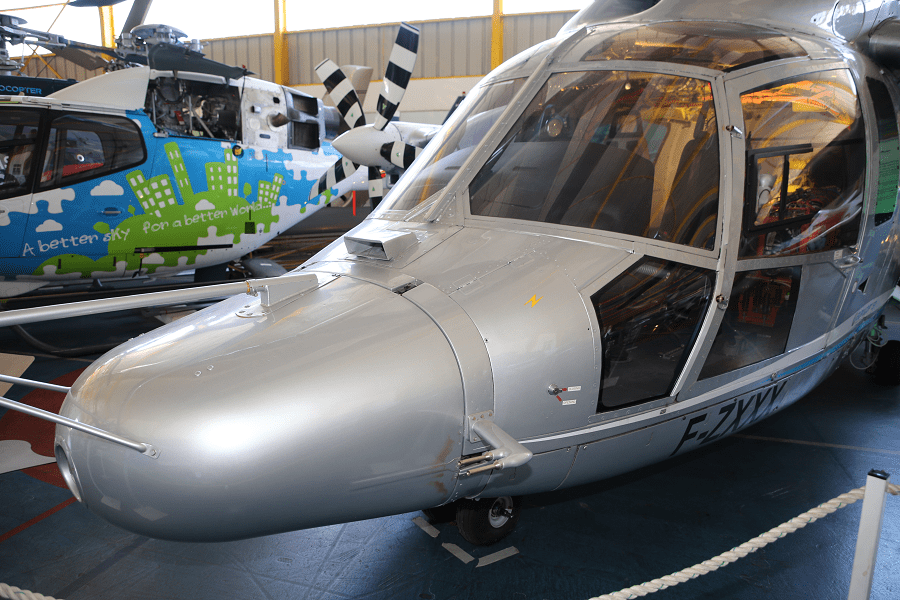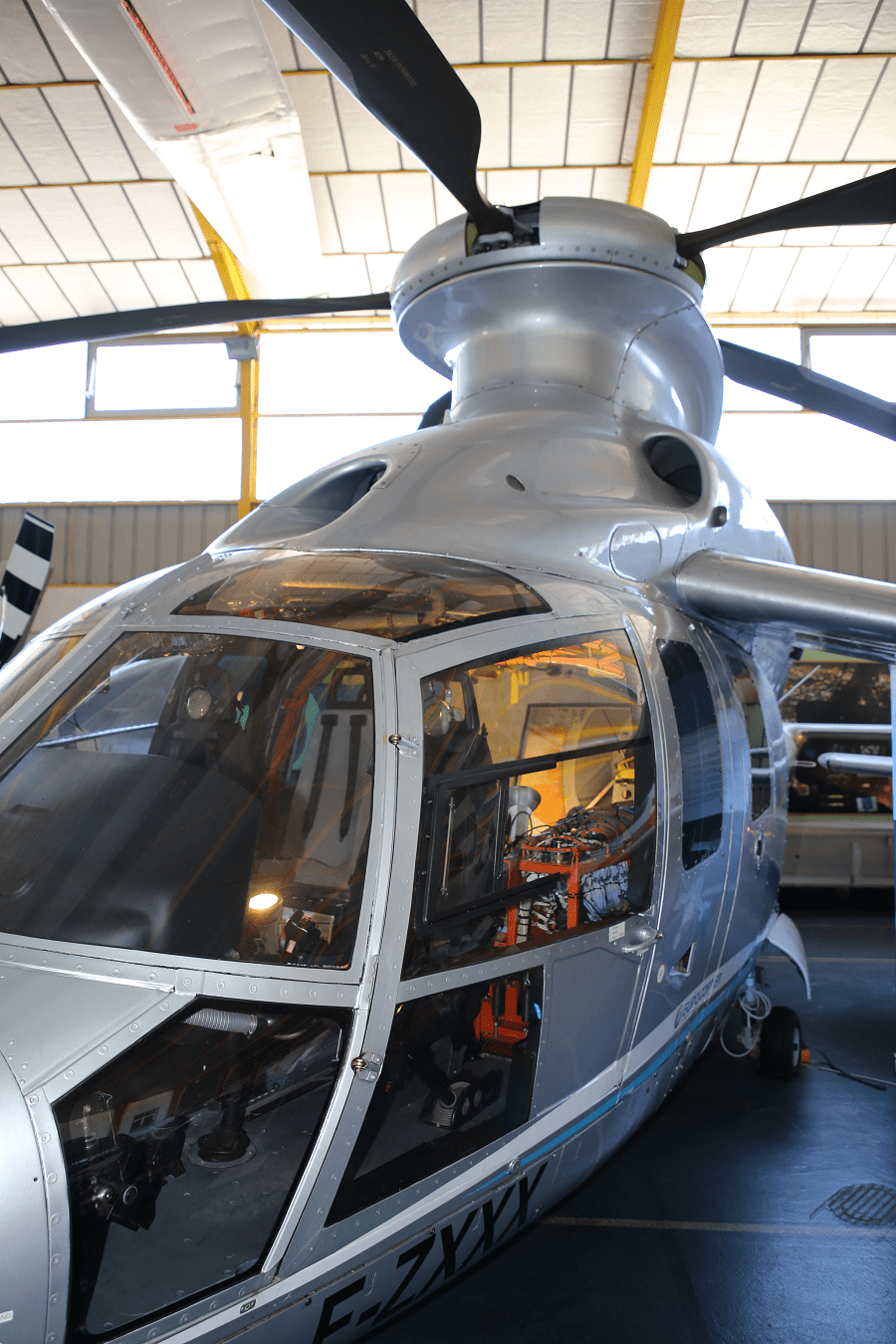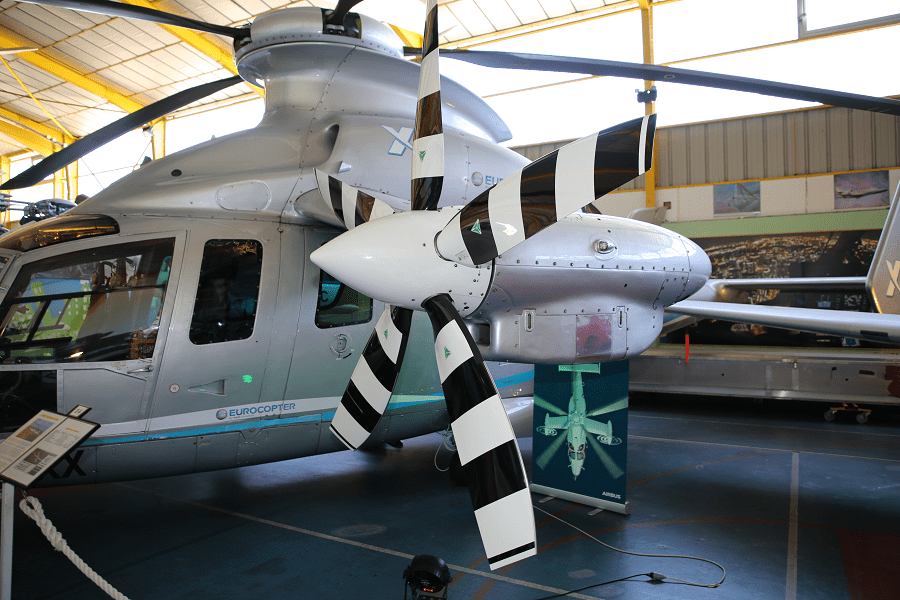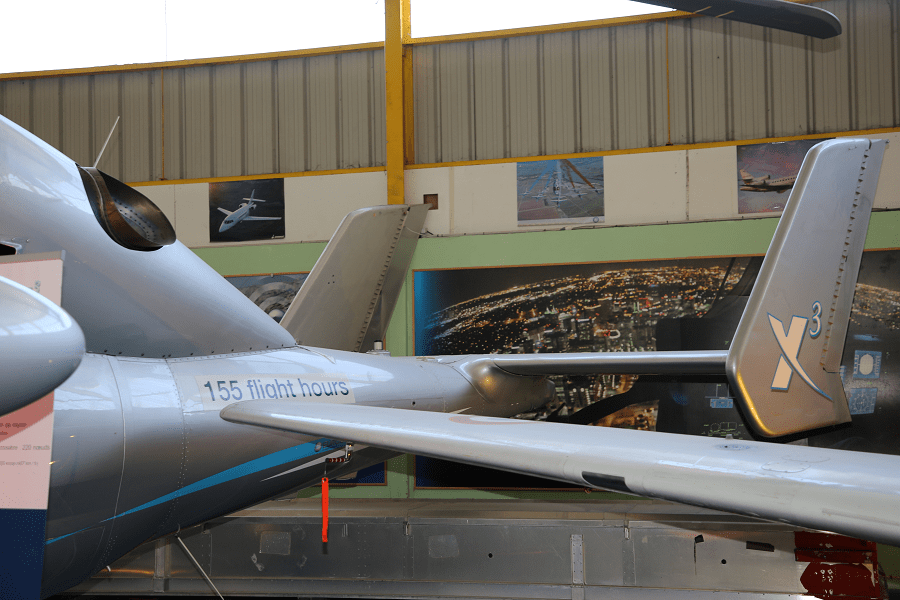The Eurocopter X³ (X-Cubed) is an experimental high-speed compound helicopter developed by Airbus Helicopters (formerly Eurocopter). A technology demonstration platform for “high-speed, long-range hybrid helicopter” or H³ concept, the X³ achieved 255 knots (472 km/h; 293 mph) in level flight on 7 June 2013, setting an unofficial helicopter speed record. In June 2014, it was placed in a French air museum in the village of Saint-Victoret.
The X³ demonstrator is based on the Eurocopter AS365 Dauphin helicopter, with the addition of short span wings each fitted with a tractor propeller, having a different pitch to counter the torque effect of the main rotor.
Conventional helicopters use tail rotors to counter the torque effect. The tractor propellers are gear driven from the two main turboshaft engines which also drive the five-bladed main rotor system, taken from a Eurocopter EC155.
Guest pilots describe the X³ flight as smooth, but the X³ does not have passive or active anti-vibration systems and can fly without stability augmentation systems, unlike the Sikorsky X2. The helicopter is designed to prove the concept of a high-speed helicopter which depends on slowing the rotor speed (by 15%) to avoid drag from the advancing blade tip, and to avoid retreating blade stall by unloading the rotor while a small wing provides 40–80% lift instead. The X³ can hover with a pitch attitude between minus 10 and plus 15 degrees. Its bank range is 40 degrees in hover, and is capable of flying at bank angles of 120 to 140 degrees. During testing the aircraft demonstrated a rate of climb of 5,500 feet per minute and high-G turn rates of 2Gs at 210 knots.
First flight: 2010
World speed record (unofficial): 472 km/h
Cruise speed: 407 km/h
Service ceiling: 3,810 m
Rate of climb: 28 m/s
Engines power: 2200 HP
In June 2014, it was placed in a French air museum in Saint-Victoret.
Airbus Helicopters was formed in 1992 as Eurocopter Group, through the merger of the helicopter divisions of Aérospatiale and DASA. The company’s heritage traces back to Blériot and Lioré et Olivier in France and to Messerschmitt and Focke-Wulf in Germany.
Airbus Helicopters and its predecessor companies have established a wide range of helicopter firsts, including the first production turboshaft-powered helicopter (the Aérospatiale Alouette II of 1955); the introduction of the Fenestron shrouded tail rotor (on the Gazelle of 1968); the first helicopter certified for full flight in icing conditions (the AS332 Super Puma, in 1984); the first production helicopter with a Fly-by-wire control system (the NHIndustries NH90, first flown in full FBW mode in 2003); the first helicopter to use a Fly-by-light primary control system (an EC135 testbed, first flown in 2003); and the first ever landing of a helicopter on Mount Everest (achieved by an AS350 B3 in 2005).



















